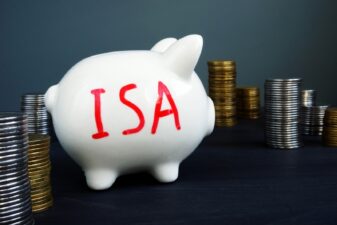Investing in a Stocks and Shares ISA is an ideal way to generate a second income because it will be free of tax. I won’t have to pay a penny in capital gains tax on my share price returns and all the dividends I receive will be free of income tax.
On 6 April every year, ISA account holders have a new £20,000 12-month contribution limit. If I had such a sum to spare right now, here’s how I’d go about investing it to aim for an annual second income of £1,500.
Please note that tax treatment depends on the individual circumstances of each client and may be subject to change in future. The content in this article is provided for information purposes only. It is not intended to be, neither does it constitute, any form of tax advice. Readers are responsible for carrying out their own due diligence and for obtaining professional advice before making any investment decisions.
Targeting high yields
For starters, I’d put my money into FTSE 100 shares. The reason I’d do that is because of the high dividend yields on offer. They trump anything I’m likely to get from US shares, for instance.
Right now, I can see 25 blue-chip UK stocks yielding over 5%. That’s a quarter of the full index!
For context, the FTSE 100 average yield is 3.9%.
Even better, 10 Footsie shares are yielding over 7% and six over 8%. This gives me plenty of scope to start building a nice second income portfolio.
Checking for resilience
Having said that, I’d dig in to assess whether I think some of those really high yields are really sustainable. Sometimes they can be a red flag.
For example, miners and housebuilders may seem to offer eye-popping yields at times, but this can be misleading. Investors might have been selling off such stocks, thereby driving up the dividend yield in anticipation of lower profits and dividends.
This time last year, for instance, shares of housebuilder Persimmon were yielding around 14%. Today, following a bruising period for the UK housing market, the company’s payout has been lowered substantially. In fact, the Persimmon yield is now just 3.8%.
So this is a risk worth bearing in mind, especially when investing in cyclical stocks. Dividends can be axed and high yields sometimes give the wrong impression at first glance.
Building a second income
To offset this risk and make my income more resilient, I’d want my portfolio to be diversified. That is, made up of a number of stocks from different sectors.
This could be, say, eight high-yield dividend shares. Some of these might include insurers Legal & General and Aviva, which yield 8% and 7.4%, respectively. Another pick could be British American Tobacco, yielding a massive 10% right now.
From such stocks, I could build a portfolio that offers an average yield of 7.5%. If I split my £20k ISA pot evenly between these, with £2,500 in each one, I’d generate income of £1,500 in the first year. And I could also get share price appreciation too, though that’s not guaranteed.
Naturally, there are risks. The global economy isn’t out of the woods yet, meaning the chance of reduced consumer spending and business activity remains high. This could affect the insurance industry as policyholders struggle to pay or renew premiums.
That said, both UK insurers have displayed resilience so far.
Meanwhile, tobacco products are still very profitable but face well-documented regulatory challenges. The monster 10% yield would essentially be my potential reward for taking on this heightened risk.
Looking ahead, my income should trend higher over time as these companies ideally increase profits and boost their dividends. So, even if one or two disappoint, I should still generate a healthy level of income next year and beyond.







